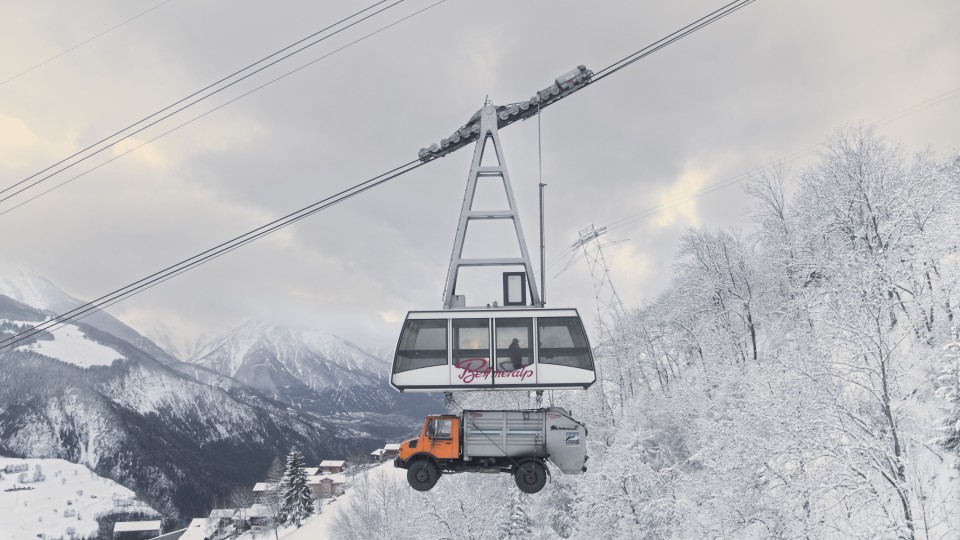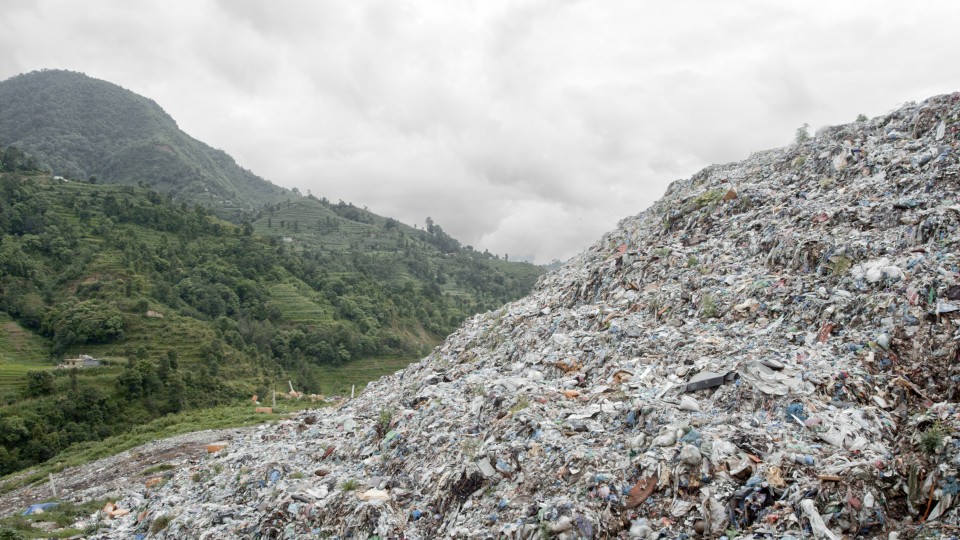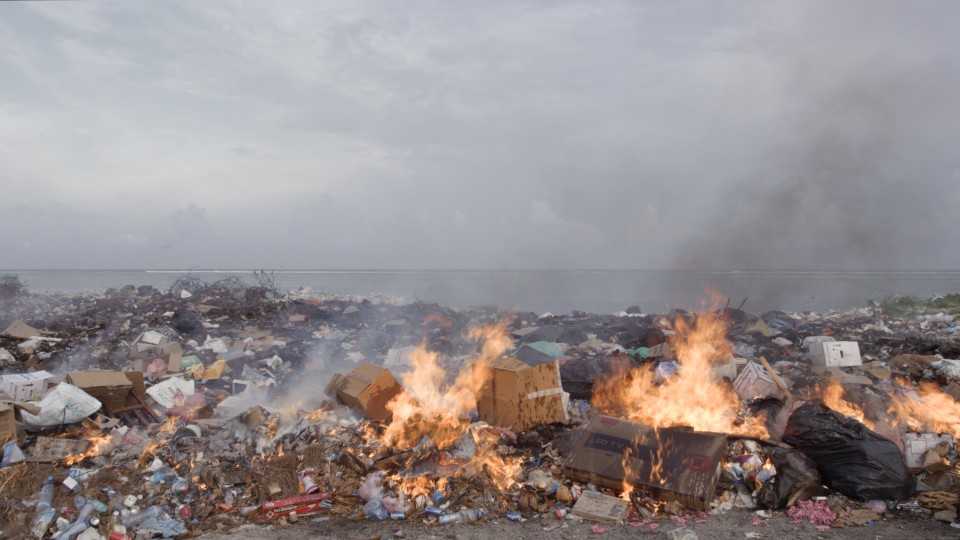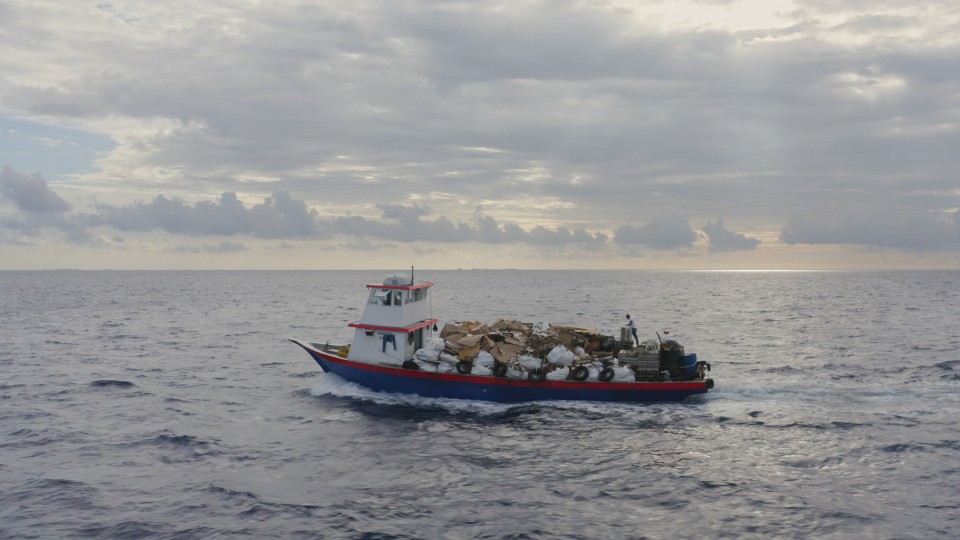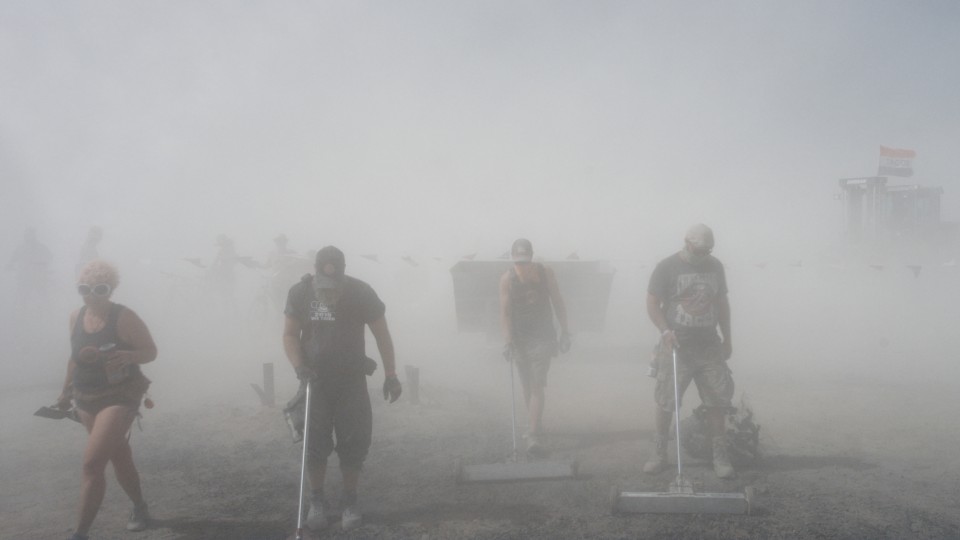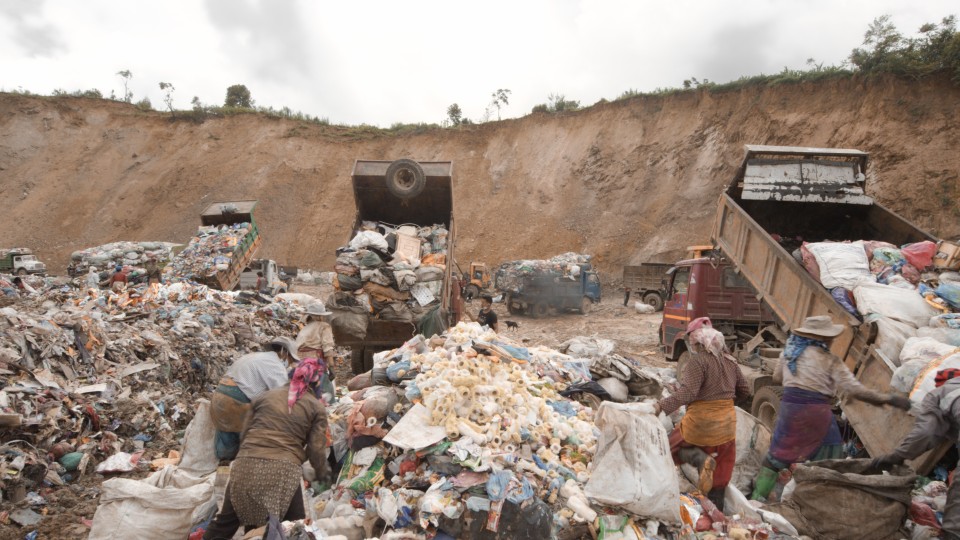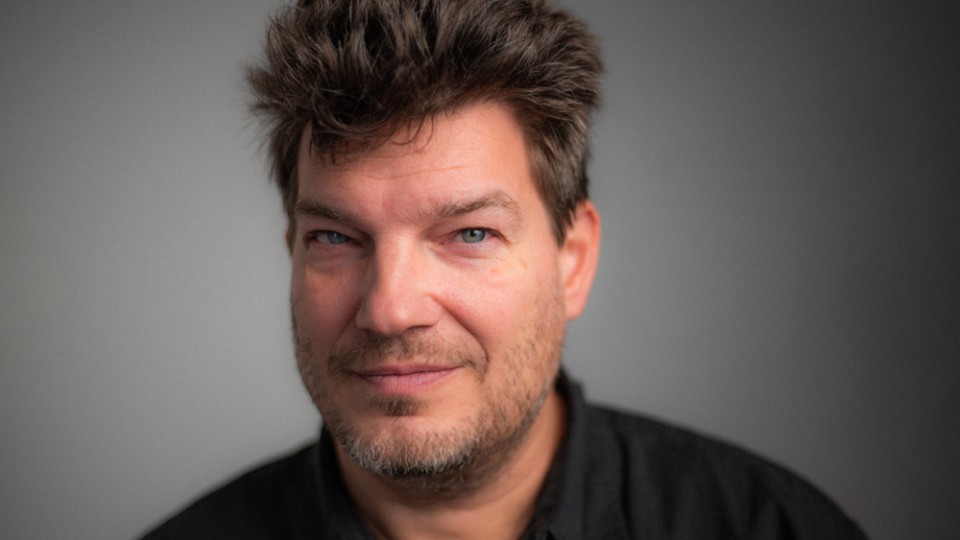Garbage-free zones no longer exist on this planet. In MATTER OUT OF PLACE Nikolaus Geyrhalter makes this abundantly clear, also stressing that despite huge efforts to place it out of sight, garbage
cannot be eliminated.
The title of your film, MATTER OUT OF PLACE, refers to a definition. What is meant by this term?
NIKOLAUS GEYRHALTER: We took the expression from Burning Man, a festival in the Nevada Desert where we also filmed. Everything that is left there
after the festival – not just garbage but everything that is not "native to the environment" and was not there before – is
described as matter out of place. Everything that people have brought, that doesn’t belong there and has to be removed again.
This is the origin of the term mooping, the meticulous cleaning after the event which is part of the DNA of Burning Man and
which forms the end of the film. I think it is a beautiful description that carries the thought further, beyond the concrete
concept of garbage, to encompass everything that would not be there or be changed without us. We humans have created a gigantic
amount of matter out of place.
In one of the first sequences, an excavator eats its way into an undeveloped meadow. I can see a connection to your previous
film EARTH: It suggests initially that a construction project is under way, until it emerges that what is being excavated
here is not soil but the contents of a landfill that have accumulated over decades. How were you able to be there with a film
camera?
NIKOLAUS GEYRHALTER: Some topics continue to engage us. In Solothurn, where we shot that sequence, several test excavations were performed with
a view to decontaminating the landfill site, and we shot the last of them. From today's perspective it is essential to clean
up this garbage dump from the seventies. But how will future generations assess the landfills or processes that are currently
state of the art? If I've learned anything from this film, and especially this segment, it's that garbage never really disappears.
Even if it is incinerated it leaves a pile of slag which is deposited somewhere and will perhaps have to be dug up again by
generations to come. I don’t only mean that waste material hasn’t been disposed of properly; it’s also possible, with increasingly
efficient technologies, to filter out recyclable materials. Old landfills contain not only environmental hazards but also
potential for recycling.
Did your research also confront you with the history of dealing with garbage?
NIKOLAUS GEYRHALTER: Garbage is a symbol of how humanity is developing, and this development is far slower than technological progress requires.
We cannot yet deal with many things that are possible and commonplace today. Suddenly throwing trash out the window and waiting
for it to rot doesn't work anymore. But we haven’t yet come much further. First, we have to internalize the fact that every
piece of garbage we currently create must be disposed of as sensibly as possible. We haven’t yet taken that evolutionary step.
How did you choose your locations?
NIKOLAUS GEYRHALTER: In this film the role of chance in the selection of locations was far from insignificant; we were thwarted by Corona again
and again. We had a lot of plans before the first lockdown that couldn't then be carried through due to pandemic-related travel
and entry regulations. So in order to cover certain topics, we switched to other countries we hadn’t originally had on the
list. One example is the large landfill in Nepal; we knew it existed, but we only managed to secure a visa to work there during
a peak phase of Corona. In fact, the place gave us very useful material. We discovered a lot because we couldn’t fall back
on familiar locations and had to find new places ourselves.
Was your focus on the size of the landfill or rather the way the waste was handled?
NIKOLAUS GEYRHALTER: It was on both: of course, we were interested in different ways of treating garbage but also in people’s desperation to deal
with it. The existence of a huge, archaic landfill was just as clear as a modern waste incineration plant. There are many
other aspects in between, and we allowed ourselves to explore the connections quite freely in the film. There are already
films that deal with the topic of waste objectively and argumentatively. It was obvious that our project couldn’t do that.
If you get involved in searching and finding, much more can appear.
Was it possible at a filming location like Nepal to take the time to observe the effort and the enormous dimension of the
landfill?
NIKOLAUS GEYRHALTER: There was time, but as always, not very much of it. The shoot was very well prepared; we knew the location manager in Nepal
well, because we had previously worked together on another film. We had received pictures of the landfill in advance, and
the rickshaw driver was already arranged; the surprising part of this shoot was the rain, which was so heavy that the landfill
was hardly navigable. These images lead the film to one of its core themes: the enormous hardship involved, for man and machine,
in the removal of waste.
You feature a group of people cleaning a beach in Albania and divers in Greece, examples where citizens are voluntarily taking
waste disposal into their own hands. Is it also a theme of the film to show how much such private initiative are needed, because
the public sector alone isn’t coping with the amount of waste?
NIKOLAUS GEYRHALTER: We don’t try to address the question of who should solve the waste problem. But it is a shared responsibility for us all.
It is a fact that garbage can be found everywhere, in large quantities. It is also known that it accumulates in the ocean.
Our aim was to create awareness by depicting this participation. There are many voluntary initiatives; they work more or less
professionally and always with enthusiasm. The ocean is the place where garbage accumulates most inconspicuously, so we worked
on these underwater shots for a long time. Here too there are volunteers at work, doing their best to clean the seabed. Because
much of the plastic that ends up in the countryside sooner or later finds its way down the rivers into the sea. It sinks there,
so it’s out of sight, which is why the shots of the bottom of the sea were so important for the film.
Long shots have always characterized your films. In some cases, from a subjective perspective, they seem to be maintained
for longer than usual here. Does this approach also refer to the time-scale involved, which is virtually infinite, when we
confront the issue of garbage?
NIKOLAUS GEYRHALTER: There are a few unusually long shots, because during filming it turned out that they constantly evolved and created a dynamic
we didn’t want to curtail. In those cases we decided to let them play out full length, because they contain a number of surprises
as a plan sequence. And of course also because waste management is an eternal process... so it must be possible to accept
a sequence like that, lasting a few minutes.
But apart from that, the editing rhythm is similar to my other films. My way of shooting images does entail some slow breathing.
The film also shows in a very physical way how strenuous and dangerous working in waste management is.
NIKOLAUS GEYRHALTER: There are many things that we like to hide.
Even in our latitudes there is a lot of manual work involved in waste processing. When we throw something into the yellow
plastic container in Vienna, it is taken by truck to Graz and partially sorted by hand. You can't imagine how many truck drivers
there are who transport garbage, and when they open the back of the trailer, the garbage dumps on them. Or what logistics
are required for the garbage to be incinerated or sorted or otherwise processed. At best, we throw our crap into separate
garbage containers and think that's it. In reality, it sets unimaginable machinery in motion, which also leaves behind a massive
CO2 footprint. Recycling processes also require immense energy. Avoidance is always the best solution.
You mentioned the Burning Man Festival in the Nevada desert at the beginning. MATTER OUT OF PLACE ends with impressive, sometimes
almost surreal images of that. How did this event come to be part of the film?
NIKOLAUS GEYRHALTER: It is part of the festival's ethos that a completely clean desert is left behind, and it has to be that way due to official
regulations. Interestingly enough, we started shooting there – and that was a stroke of luck, because Burning Man hasn't taken
place since then due to Corona. I don't think you'll find anyone who can describe exactly what Burning Man really is. I would
call it an event rather than a festival. It is a gathering of many people in the desert, and at the end the sculpture of a
man created by an artist is ritually burned. Participants have to bring everything for their personal needs, be nice to other
people, help out if necessary and not leave any crap behind. Express yourself is the motto; everyone can feel like an artist,
put an art installation in place and dismantle it again. Burning Man stands for an alternative America, where the mood of
Yes, we can resonates. There is no money in circulation because you can't buy anything, there is no phone reception and no
cars. Bikes are the only means of transport. For a week you are dependent on yourself and others. Leave no trace really is
the motto, and people stick to it. It’s absolutely amazing how clean the desert is left at the end.
Did working on this film make you more pessimistic?
NIKOLAUS GEYRHALTER: No. I try to be realistic. Pessimism isn’t a solution either. When you confront a topic, you have to go through with it.
And on the basis of the research, you know roughly what to expect. The filming didn't bring any big surprises. The film has
essentially turned out as the research suggested. There is garbage everywhere. And thank God there are people working on improving
the situation, though it's pretty hopeless. That is the short version. But that alone is not enough to make me despair. It's
something you have to keep working on, keep pushing yourself. I'm not a role model either. The possibilities for action are
limited. If you don't want to spend a large part of your life energy on living garbage-free, then it's not so easy.
The completely absurd thing now, when we may not have enough gas for the coming winter, is that we’ll be happy about waste
that can be converted into a little energy in incineration plants.
Interview: Karin Schiefer
July 2022
Translation: Charles Osborne

